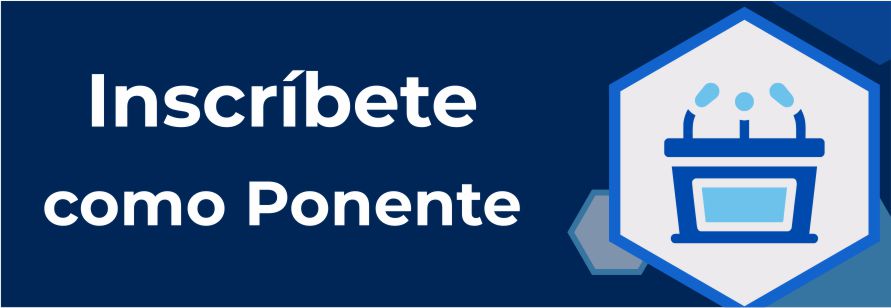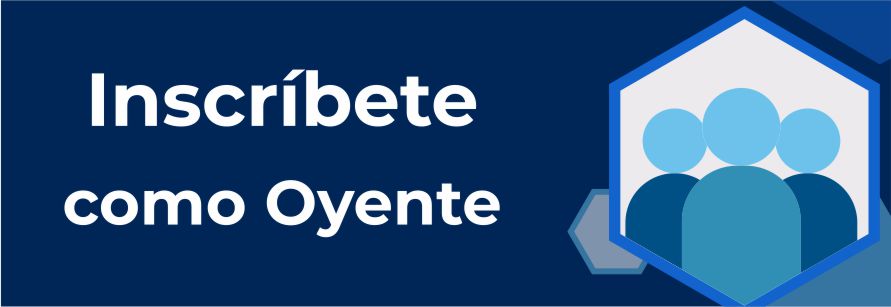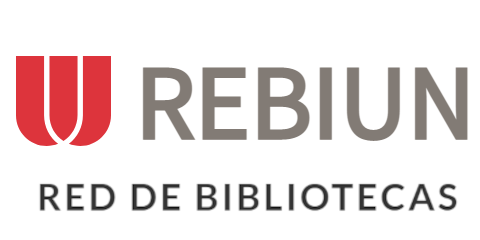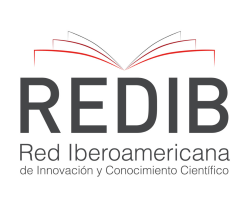E-learning en educación superior: análisis bibliométrico
Resumen
El e-learning como modalidad de educación viene en aumento, por lo que resulta importante conocer sobre su implementación en las instituciones de educación superior. El propósito de este estudio es analizar la producción científica relacionada con el e-learning en la educación superior entre 2019 y 2023, identificando tendencias, áreas de investigación y dinámicas de colaboración. Análisis bibliométrico con base en la literatura en Scopus. Se estudiaron indicadores como producción científica, cocitaciones, coautorías y redes de palabras clave utilizando herramientas como Bibliometrix y VOSviewer. La producción científica sobre e-learning presenta un aumento anual del 9.33%, con 281 publicaciones en 193 fuentes. Se identificaron 925 autores, con un 23.9% de coautorías internacionales. Malasia lidera la producción científica sobre e-learning, seguida de Indonesia y Rusia. América Latina contribuye con el 6.8% del total mundial de publicaciones. El inglés (94%) y el artículo científico (60%) son el idioma y el tipo de publicación predominante. Se concluye que el e-learning se posiciona como un eje central en la educación superior, pero su desarrollo varía entre regiones. América Latina debe fortalecer su participación mediante investigaciones más integrales y colaboraciones internacionales.
Descargas
Citas
Al-Adwan, A. S., Nofal, M., Akram, H., Albelbisi, N. A., & Al-Okaily, M. (2022). Towards a Sustainable Adoption of E-Learning Systems: The Role of Self-Directed Learning. Journal of Information Technology Education: Research, 21.
Al-araibi, A. A. M., Mahrin, M. N. R. B., & Yusoff, R. C. M. (2019). Technological aspect factors of E-learning readiness in higher education institutions: Delphi technique. Education and Information Technologies, 24, 567-590. https://link.springer.com/article/10.1007/s10639-018-9780-9
Aldowah, H., Al-Samarraie, H., & Ghazal, S. (2019). How course, contextual, and technological challenges are associated with instructors’ individual challenges to successfully implement E-learning: A developing country perspective. IEEE Access, 7, 48792-48806.
https://ieeexplore.ieee.org/abstract/document/8685091/
Almaiah, M. A., & Almulhem, A. (2018). A conceptual framework for determining the success factors of e-learning system implementation using Delphi technique. Journal of Theoretical and Applied Information Technology, 96(17), 5962-5976.
https://www.jatit.org/volumes/Vol96No17/26Vol96No17.pd f
Arencibia-Jorge, R., Vega-Almeida, R. L., & Carrillo-Calvet, H. (2020). Evolución y alcance multidisciplinar de tres técnicas de análisis bibliométrico. Palabra clave, 10(1), 102-102. http://www.scielo.org.ar/scielo.php?script=sci_arttext&pid=S1853-99122020000200102
Aria, M., & Cuccurullo, C. (2017). bibliometrix: An R-tool for comprehensive science mapping analysis. Journal of informetrics, 11(4), 959-975. https://doi.org/10.1016/j.joi.2017.08.007
Ayala-Garcia, E.., Hernández-Suárez, C.., & Prada-Nuñez, R. (2020). Proceso educativo en programas de Arquitectura bajo el aislamiento preventivo obligatorio por causa del COVID-19: Educational process of Architecture programs in universities in Colombia under compulsory preventive isolation due to COVID-19. Educación Y Humanismo, 22(39).
https://doi.org/10.17081/eduhum.22.39.4205
Azlan, C. A., Wong, J. H. D., Tan, L. K., Huri, M. S. N. A., Ung, N. M., Pallath, V., ... & Ng, K. H. (2020). Teaching and learning of postgraduate medical physics using Internet-based e-learning during the COVID-19 pandemic–A case study from Malaysia. Physica Medica, 80, 10-16. https://www.sciencedirect.com/science/article/pii/S1120179720302453
Azurduy, M. O. (2021). Un análisis bibliométrico sobre el uso y la adopción de la educación en línea en la enseñanza superior. Revista Científica de Publicación del Centro Psicopedagógico y de Investigación en Educación Superior, 8(2), 17-17.
https://ojs.cepies.umsa.bo/RCV/article/view/77
Cooper, I. D. (2015). Bibliometrics basics. Journal of the Medical Library Association: JMLA, 103(4), 217. https://doi:10.3163/1536-5050.103.4.013
Echchakoui, S. (2020). Why and how to merge Scopus and Web of Science during bibliometric analysis: the case of sales force literature from 1912 to 2019. Journal of Marketing Analytics, 8, 165–184. https://doi.org/10.1057/s41270-020-00081-9
Edem Adzovie, D., & Jibril, A. B. (2022). Assessment of the effects of Covid-19 pandemic on the prospects of e-learning in higher learning institutions: The mediating role of academic innovativeness and technological growth. Cogent Education, 9(1), 2041222. https://www.tandfonline.com/doi/full/10.1080/2331186X.2022.2041222
Fülöp, M. T., Breaz, T. O., Topor, I. D., Ionescu, C. A., & Dragolea, L. L. (2023). Challenges and perceptions of e-learning for educational sustainability in the “new normality era”. Frontiers in Psychology, 14, 1104633.
https://www.frontiersin.org/journals/psychology/articles/10.3389/fpsyg.2023.1104633/full
Hassan, W., Zafar, M., Hassan, H., Kamdem, J. P., Duarte, A. E. & Rocha, J. B. T. d. (2020). Ten years of Arabian Journal of Chemistry: A bibliometric analysis. Arabian Journal of Chemistry, 13, pp. 7720–7743. https://doi.org/10.1016/j.arabjc.2020.09.007
Liu, C., Zou, D., Chen, X., Xie, H., & Chan, W. H. (2021). A bibliometric review on latent topics and trends of the empirical MOOC literature (2008–2019). Asia Pacific Education Review, 22(3), 515-534. https://doi.org/10.1007/s12564-021-09692-y
Maatuk, A. M., Elberkawi, E. K., Aljawarneh, S., Rashaideh, H., & Alharbi, H. (2022). The COVID-19 pandemic and E-learning: challenges and opportunities from the perspective of students and instructors. Journal of computing in higher education, 34(1), 21-38.
https://link.springer.com/article/10.1007/s12528-021-09274-2
Mpungose, C. B. (2020). Is Moodle or WhatsApp the preferred e-learning platform at a South African university? First-year students’ experiences. Education and information technologies, 25(2), 927-941. https://link.springer.com/article/10.1007/s10639-019-10005-5
Noblecilla, A. M. R., Encarnación, D. O. H., Sánchez, O. E. R., & Fárez, D. F. C. (2023). Análisis bibliométrico de la producción científica sobre educación virtual en tiempos de COVID-19. Revista Multidisciplinaria Investigación Contemporánea, 1(2), 58-77.
https://doi.org/10.58995/redlic.ic.v1.n2.a49
Organización Mundial de la Salud -OMS. (2020, febrero 19). Alocución de apertura del director general de la OMS en rueda de prensa para las misiones diplomáticas sobre la Covid-19. Https://www.who.int/es/dg/speeches/detail/who-director-general-s-opening-remarks-at-the-mission-briefing-on-covid-19
Palmas, S. y Razo, A. (2022). Experiencias en investigación: un acercamiento didáctico. ISBN: 978-607-28-2689-2. https://www.researchgate.net/publication/370603023_Analisis_bibliometrico_Aspectos_basicos_para_su_aplicacion_en_ciencias_sociales
R Core Team. (2016). R: A language and environment for statistical computing. Vienna, Austria: R Foundation for Statistical Computing. https://www.R-project.org
Rodríguez Orejuela, A., Osorio Andrade, C. F., & Peláez Muñoz, J. (2020). Dos décadas de investigación en electronic word-of-mouth: un análisis bibliométrico. Pensamiento & Gestión, (48), 251-275.
http://www.scielo.org.co/scielo.php?pid=S1657-62762020000100251&script=sci_arttext
Rodríguez-Sabiote, Clemente & Úbeda-Sánchez, Álvaro-Manuel (2019). Análisis bibliométrico a través de indicadores de calidad metodológica de las revistas españolas de educación indizadas en JCR durante el trienio 2014-2016. RELIEVE, 25(1), art. 2. doi:
http://doi.org/10.7203/relieve.25.1.12771
Rojas-Sánchez, MA, Sánchez-Prieto, JC y García-Peñalvo, FJ (2023). Revisión sistemática de la literatura y análisis bibliométrico sobre la investigación del e-learning en la educación superior. Computadoras y Educación, 194, 104707. https://doi.org/10.1016/j.compedu.2023.104707
Sarker, M. F. H., Mahmud, R. A., Islam, M. S., & Islam, M. K. (2019). Use of e-learning at higher educational institutions in Bangladesh: Opportunities and challenges. Journal of Applied Research in Higher Education, 11(2), 210-223. https://doi.org/10.1108/JARHE-06-2018-0099
Semaan, S.L. (23 de marzo de 2020). ¿Qué es Scopus? ¿Y para qué sirve? Sant Joan Déu Biblioteca. Recuperado el 20 de diciembre de 2023 de https://bibliosjd.org/2018/01/24/scopus-que-es-para-que-sirve /
Shakah, G., Al-Oqaily, A., & Alqudah, F. (2019). Motivation path between the difficulties and attitudes of using the e-learning systems in the Jordanian universities: Aajloun University as a case study. International Journal of Emerging Technologies in Learning (iJET), 14(19), 26-48. https://www.learntechlib.org/p/217010/
Sweileh, W. (2019). A bibliometric analysis of health-related literature on natural disasters from 1900 to 2017. Health Research Policy and Systems, 17(1), 1-11. https://doi.org/10.1186/s12961-019-0418-1
Van Eck, N. and Waltman, L. (2019). Manual for VOSviwer version 1.6.10. https://www.vosviewer.com/documentation/Manual_VOSviewer_1.6.18.pdf
Verdún, N. (2016). Educación virtual y sus configuraciones emergentes: Notas acerca del e-learning, b-learning y m-learning. https://rid.unrn.edu.ar/handle/20.500.12049/5257
Yawson, D. E., & Yamoah, F. A. (2021). Gender variability in E-learning utility essentials: Evidence from a multi-generational higher education cohort. Computers in Human Behavior, 114, 106558. https://www.sciencedirect.com/science/article/abs/pii/S0747563220303083
Zhu, J., y Liu, W. (2020). A tale of two databases: the use of Web of Science and Scopus in academic papers. Scientometrics, 123, 321–335. https://doi.org/10.1007/s11192-020-03387-8
Derechos de autor 2025 Orlando Celeita Murcia , Carlos Arango Pastrana, Claudia Cecilia Peña Montoya

Esta obra está bajo licencia internacional Creative Commons Reconocimiento 4.0.













.png)




















.png)
1.png)


